Popular categories
Looking for a yarn?

75% Wool, 25% Polyamide
from 3.00 $ /50g
Order DROPS Fabel from Wool Warehouse Direct Ltd
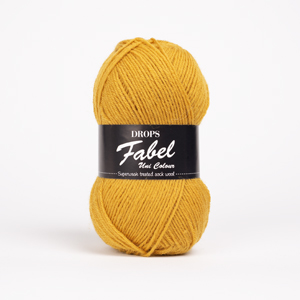
|
DROPS Fabel uni colour 75% Wool, 25% Polyamide |
3.00 $ /50g |
Order |
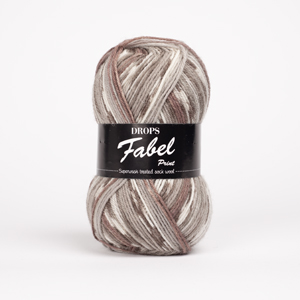
|
DROPS Fabel 75% Wool, 25% Polyamide |
3.25 $ /50g |
Order |
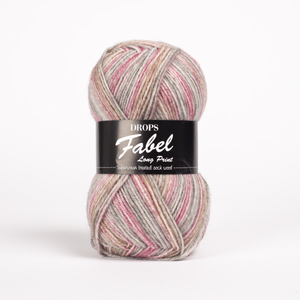
|
DROPS Fabel long print 75% Wool, 25% Polyamide |
3.50 $ /50g |
Order |
Clicking the ORDER button will redirect you to Wool Warehouse Direct Ltd website
Order DROPS Needles & Hooks
Clicking the ORDER button will redirect you to Wool Warehouse Direct Ltd website
The yarn cost is calculated from the pattern’s smallest size and the yarn’s cheapest product type. Looking for an even better price? You might find it on the DROPS Deals!
Little Shepherd
Knitted baby jumpsuit with or without buttons between the legs, in DROPS Fabel and DROPS Alpaca
Change language:
English (US/in)- English (US/in)
- Česky
- Dansk
- Deutsch
- Eesti keel
- English (UK/cm)
- Español
- Français
- Íslenska
- Italiano - not translated
- Magyar
- Nederlands
- Norsk
- Polski
- Português
- Suomi
- Svenska
- English (UK/cm), Bulgaria
- English (UK/cm), Croatia
- English (UK/cm), Greece
- English (UK/cm), Latvia
- English (UK/cm), Lithuania
- English (UK/cm), Romania
- English (UK/cm), Slovenia
- Česky, Slovakia
Bust:48-56-62 (66-66) cm [19"-22"-24⅜" (26"-26")]
Full length: 48-57-66 (72-80) cm [19"-22½"-26" (28⅜"-31½")]
Materials: DROPS FABEL from Garnstudio
100-100-150 (150-200) gr f.nr 162, blue sea
And use: DROPS ALPACA from Garnstudio
50-50-50 (100-100) g color no 2918, turquoise
50 g for all sizes color no 6834, blue/turquoise mix
50 g for all sizes color no 0100, off-white
DROPS DOUBLE POINTED NEEDLES and CIRCULAR NEEDLE (40 cm [16"] for the 2 smaller sizes and 60 cm [24"] for the 3 larger sizes) size 2.5 mm [US 1] – or size needed to get 26 sts x 35 rows in stockinette st = 10 x 10 cm [4" x 4"]. In M.1 knitting gauge will be width = 27 sts because of the use of several colors.
DROPS WOODEN BUTTON no 513: 4 pcs for shoulders and 10 pcs for button fastening between legs if needed.
-------------------------------------------------------
Alternative Yarn – See how to change yarns here
Yarn Groups A to F – Use the same pattern and change the yarn here
Yarn usage using an alternative yarn – Use our yarn converter here
-------------------------------------------------------
You might also like...

75% Wool, 25% Polyamide
from 3.00 $ /50g
Order DROPS Fabel from Wool Warehouse Direct Ltd

|
DROPS Fabel uni colour 75% Wool, 25% Polyamide 3.00 $ /50g Order |

|
DROPS Fabel print 75% Wool, 25% Polyamide 3.25 $ /50g Order |

|
DROPS Fabel long print 75% Wool, 25% Polyamide 3.50 $ /50g Order |
Clicking the ORDER button will redirect you to Wool Warehouse Direct Ltd website
Order DROPS Needles & Hooks
Clicking the ORDER button will redirect you to Wool Warehouse Direct Ltd website
The yarn cost is calculated from the pattern’s smallest size and the yarn’s cheapest product type. Looking for an even better price? You might find it on the DROPS Deals!
Pattern instructions
GARTER ST (back and forth on needle): K all rows.
PATTERN:
See diagram M.1. The diagram shows 1 pattern repeat and the entire pattern is worked in stockinette st. NOTE: When working Fabel in M.1, we’ve used an orange section of the ball.
DECREASING TIP-1:
Dec on each side of marker at front as follows: work row until 3 sts before marker, K2 tog, K2 (marker sits between these 2 sts), slip 1 st as if to K, K1, psso.
DECREASING TIP-2:
Make all dec from RS inside 2 sts by K2 tog.
----------------------------------------------------------
----------------------------------------------------------
JUMPSUIT:
Worked from bottom of legs towards the top.
LEG (without buttons):
Worked in the round on double pointed needles.
Cast on 62-70-76 (84-86) sts with blue/turquoise mix Alpaca on double pointed needles size 2.5 mm [US 1] and work 2 cm [3/4"] garter st – SEE ABOVE. Change to Fabel and continue in stockinette st. Insert a marker at beg of round = inside of leg.
REMEMBER THE KNITTING GAUGE!
When piece measures 3-3-4 (4-5) cm [1⅛"-1⅛"-1½" (1½"-2")] inc 1 st on each side of marker on every 4-6-6 (6-9) round a total of 9-9-10 (10-10) times = 80-88-96 (104-106) sts. When piece measures 14-18-21 (23-30) cm [5½"-7"-8¼" (9"-11¾")] divide the piece by marker and continue back and forth on needle (to make it easier to slip both legs on the same circular needle afterwards) – AT THE SAME TIME cast on 1 new st each side for seam = 82-90-98 (106-108) sts.
When piece measures 16-20-23 (25-32) cm [6¼"-8"-9" (9 ¾"-12½")] bind off 3 sts each side = 76-84-92 (100-102) sts. Put piece aside and knit the other leg in the same way.
LEG (with buttons):
Worked back and forth on circular needle.
Cast on 64-72-78 (86-88) sts (includes 1 edge st each side) with blue/turquoise mix Alpaca on circular needle size 2.5 mm [US 1] and work 2 cm [3/4"] garter st back and forth on needle – SEE ABOVE.
Change to Fabel and continue in stockinette st with 1 edge st in garter st each side.
REMEMBER THE KNITTING GAUGE!
When piece measures 3-3-4 (4-5) cm [1⅛"-1⅛"-1½" (1½"-2")] inc 1 st each side on every 4-6-6 (6-9) row a total of 9-9-10 (10-10) times = 82-90-98 (106-108) sts. When piece measures 16-20-23 (25-32) cm [6¼"-8"-9" (9 ¾"-12½")] bind off 3 sts each side = 76-84-92 (100-102) sts. Put piece aside and knit the other leg in the same way.
BODY PIECE:
Slip both legs on the same circular needle size 2.5 mm [US 1] = 152-168-184 (200-204) sts. Insert 1 marker mid front and 1 marker mid back – round beg mid back. Continue in stockinette st, AT THE SAME TIME dec 2 sts mid front – SEE DECREASING TIP-1 – and repeat the dec on every other round a total of 6 times = 140-156-172 (188-192) sts.
Remove marker at front. When piece measures 30-37-45 (50-57) cm [11¾"-14½"-17¾" (19¾"-22½")] work shortened rows at back as follows (to make pants wider at the back) – beg by marker mid back: Work 12 sts, turn piece, slip first st as if to K, tighten thread, work 24 sts, turn piece, slip first st as if to K, tighten thread. Continue like this, working 12 more sts before each turn another 8-10-10 (12-12) times. Now work 1 round on all sts, AT THE SAME TIME dec 14-12-10 (8-12) sts evenly on round = 126-144-162 (180-180) sts. Remove marker mid back.
NOW INSERT 1 MARKER EACH SIDE AS FOLLOWS:
SIZE 1/3 MONTHS: Insert markers mid between 2 sts with 63 sts on front and back piece.
SIZE 6/9 MONTHS: Insert markers in a st with 71 sts on front and back piece +1 st each.
SIZE 12/18 MONTHS: Insert markers mid between 2 sts with 81 sts on front and back piece.
SIZE 2 AND 3/4 YEARS: Insert markers in a st with 89 sts on front and back piece +1 st each.
ALL SIZES: Change to blue/turquoise mix Alpaca – round now beg by marker at one of the sides.
Work 2 rounds garter st – SEE ABOVE. Change to turquoise Alpaca and work 2 rounds garter st. Continue in M.1 – make sure to have the arrow in diagram mid front. After M.1 complete piece in turquoise garter st – AT THE SAME TIME on first round dec 6-6-6 (8-8) sts evenly (dec equal amount of sts front and back) = 120-138-156 (172-172) sts.
When piece measures 38-46-54 (59-67) cm [15"-18"-21¼" (23¼"-26⅜")] (measured at front) bind off 4-5-6 (7-7) sts each side for armhole = 56-64-72 (79-79) sts on front and back piece and now complete each piece separately.
FRONT PIECE: = 56-64-72 (79-79) sts. Continue in garter st back and forth on needle, AT THE SAME TIME bind off 1 st each side to shape the armhole – SEE DECREASING TIP-2 – on every other row a total of 8-9-9 (8-5) times = 40-46-54 (63-69) sts. When piece measures 43-52-60 (66-71) cm [17"-20½"-23⅝" (26"-28")] bind off the middle 12-14-18 (21-23) sts for neck and complete each side separately. Bind off to shape the neckline on every other row – SEE DECREASING TIP-2: 1 st 5 times = 9-11-13 (16-18) sts left on shoulder. When piece measures 48-57-66 (72-80) cm [19"-22½"-26" (28⅜"-31½")] make 2 buttonholes on shoulder as follows: work 1 st, K2 tog, 1 YO, work 2-4-6 (9-11) sts, K2 tog, 1 YO, work 2 sts. Work 2 rows on all sts and bind off.
BACK PIECE = 56-64-72 (79-79) sts. Bind off for armholes as described for front piece = 40-46-54 (63-69) sts. When armhole measures 8-9-10 (11-11) cm [3⅛"-3½"-4" (4⅜"-4⅜")] bind off the middle 18-20-24 (27-29) sts for neck and complete each side separately. Bind off to shape the neckline on every other row – SEE DECREASING TIP-2: 1 st 2 times = 9-11-13 (16-18) sts left on shoulder. Bind off when armhole measures 11-12-13 (14-14) cm [4⅜"-4¾"-5⅛" (5½"-5½")].
ASSEMBLY (without buttons between legs):
Sew the inside of legs at the top inside 1 edge st. Sew opening between legs, front of leg towards back of leg.
Sew on buttons on shoulders.
ASSEMBLY (with buttons between legs):
Edge for buttons on the back of leg:
Pick up 84-104-120 (130-166) sts with turquoise Alpaca on circular needle size 2.5 mm [US 1] – beg at bottom of left leg, continue up along leg and down along right leg. Work 10 rows garter st back and forth on needle and bind off.
Edge for buttons on the front of leg:
Pick up 84-104-120 (130-166) sts with turquoise Alpaca on circular needle size 2.5 mm [US 1] – beg at the bottom of right leg, continue up along leg and down along left leg. Work 3 rows garter st back and forth on needle. On next row bind off for 10 buttonholes evenly distributed (5 buttonholes on each leg). 1 buttonhole = bind off 2 sts and cast on 2 new sts on return row.
Work another 6 rows garter st and bind off.
Sew buttons to edge on the back of leg, and on shoulders
This pattern has been corrected. Click here to see the correction/s.
100-100-150 (150-200) g color 162, blue sea
Diagram
All measurements in charts are in cm.

|
= off-white Alpaca |

|
= blue/turquoise Alpaca |

|
= turquoise Alpaca |

|
= Fabel |


What can you do with our patterns? You can share DROPS patterns online, using the pattern original picture, materials, name and number. But you are NOT ALLOWED to reproduce the complete pattern digitally in any way. Yarn stores are welcome to use the DROPS pattern database to promote the sale of our assortment. You can print out our patterns, make as many copies as you’d like. The only thing we ask is that you don't make any changes / additions to the original printed document. And that the patterns according to the DROPS philosophy are given out to the consumers for free. Editorials that wish to publish our patterns in printed books or magazines can contact us for more information. The sale of garments based on DROPS patterns is permitted as long as they are sold as single items or per order. Further commercial use of the patterns is not permitted. It has to be clearly stated that the garment is made based on a design from DROPS DESIGN. The use of clothing labels of which DROPS DESIGN forms part is conditioned by the inclusion of the following text: “A DROPS DESIGN made by …..”. The use of DROPS photos for marketing purposes/sales is only permitted in connection with the use/sale of DROPS products. The photos may not be cut or edited and the logo should be clearly visible.
We reserve the right to withdraw the permission for use of our patterns at any time, notwithstanding the reason.
Each of our patterns has specific tutorial videos to help you.
These step-by-step tutorials might also help you:
Why is the knitting/crochet tension so important?
Knitting tension is what determines the final measurements of your work, and is usually measured per 10 x 10 cm. It is provided like so: number of stitches in width x number of rows in height - eg: 19 stitches x 26 rows = 10 x 10 cm.
The knitting tension is very individual; some people knit/crochet loosely while others work tightly. You adjust the knitting tension with the needle size, which is why the suggested needle size only serve as a guide! You need to adjust this (up or down) to ensure that YOUR knitting tension matches the knitting tension provided in the pattern. If you work with a different knitting tension than provided you will have a different yarn consumption, and your work will have different measurements than what the pattern suggests.
The knitting tension also determines which yarns can replace each other. As long as you achieve the same knitting tension you can replace one yarn with another.
See DROPS lesson: How to measure your tension/gauge
See DROPS video: How to make a gauge tension swatch
How do I know how many balls of yarn I need?
The required amount of yarn is provided in grams, eg: 450 g. To calculate how many balls you’ll need you first need to know how many grams are in 1 ball (25g, 50g or 100g). This information is available if you click on the individual yarn quality on our pages. Divide the amount required with the amount of each ball. For example, if each ball is 50g (the most common amount), the calculation will be as follows: 450 / 50 = 9 balls.
Can I use a different yarn than what the pattern suggests?
The important thing when changing from one yarn to another is that the knitting/crochet tension remains the same. This is so that the measurements of the finished piece will be the same as on the sketch provided. It is easier to achieve the same knitting tension using yarns from the same yarn group. It is also possible to work with multiple strands of a thinner yarn to achieve the knitting tension of a thicker one. Please try our yarn converter. We recommend you to always work a test swatch.
Please NOTE: when changing yarn the garment might have a different look and feel to the garment in the photo, due to individual properties and qualities of each yarn.
See DROPS lesson: Can I use a different yarn than the one mentioned in the pattern?
What are the yarn groups?
All our yarns are categorised into yarn groups (from A to F) according to thickness and knitting tension – group A contains the thinnest yarns and group F the thickest. This makes it easier for you to find alternative yarns to our patterns, should you wish to switch yarn. All yarns within the same group have a similar knitting tension and can easily replace each other. However, different yarn qualities have different structures and properties which will give the finished work a unique look and feel.
How do I use the yarn converter?
At the top of all our patterns you’ll find a link to our yarn converter, which is a helpful tool should you wish to use a different yarn than suggested. By filling in the yarn quality you wish to replace, the amount (in your size) and number of strands, the converter will present good alternative yarns with the same knitting tension. Additionally it will tell you how much you’ll require in the new qualities and whether you’ll need to work with multiple strands. Most skeins are 50g (some are 25g or 100g).
If the pattern is worked with multiple colours, every colour will have to be converted separately. Similarly, if the pattern is worked with several strands of different yarns (for example 1 strand Alpaca and 1 strand Kid-Silk) you will have to find alternatives for each, individually.
Why do you show discontinued yarns in the patterns?
Since different yarns have different qualities and textures we have chosen to keep the original yarn in our patterns. However, you can easily find options among our available qualities by using our yarn converter, or simply pick a yarn from the same yarn group.
It is possible that some retailers still have discontinued yarns in stock, or that someone has a few skeins at home that they would like to find patterns for.
The yarn converter will provide both alternative yarn as well as required amount in the new quality.
What size should I knit?
If you think it's hard to decide what size to make, it can be a good idea to measure a garment you own already and like the size of. Then you can pick the size by comparing those measures with the ones available in the pattern's size chart.
You'll find the size chart at the bottom of the pattern.
See DROPS lesson: How to read size chart
Why do I get the wrong knitting tension with the suggested needle size?
The needle size provided in the pattern serves only as a guide, the important thing is to follow the knitting tension. And since knitting tension is very individual, you will have to adjust the needle size to ensure that YOUR tension is the same as in the pattern – maybe you’ll have to adjust 1, or even 2 needle sizes, up or down to achieve the correct tension. For this, we recommend that you work test swatches.
Should you work with a different knitting tension than the one provided, the measurements of the finished garment might deviate from the measurement sketch.
See DROPS lesson: How to measure your tension/gauge
See DROPS video: How to make a gauge tension swatch
Why is the pattern worked top-down?
Working a garment top-down provides more flexibility and room for personal adjustment. For example it is easier to try the garment on while working, as well as making adjustments to length of yoke and shoulder caps.
The instructions are carefully explaining every step, in the correct order. Diagrams are adjusted to the knitting direction and are worked as usual.
How do I work according to a knitting diagram?
The diagram depicts all rows/rounds, and every stitch seen from the right side. It is read from bottom to top, from right to left. 1 square = 1 stitch.
When working back and forth, every other row is worked from the right side and every other row is worked from the wrong side. When working from the wrong side, the diagram will have to be worked reversed: from left to right, knit stitches are purled, purl stitches are knit etc.
When working in the round every round is worked from the right side and the diagram are worked from right to left on all rounds.
See DROPS lesson: How to read knitting diagrams
How do I work according to a crochet diagram?
The diagram depicts all rows/rounds, and every stitch seen from the right side. It is worked from bottom to top, from right to left.
When working back and forth every other row is worked from the right side: from right to left and every other row is worked from the wrong side: from left to right.
When working in the round, every row in the diagram are worked from the right side, from right to left.
When working a circular diagram you start in the middle and work your way outwards, counter clockwise, row by row.
The rows usually start with a given number of chain stitches (equivalent to the height of the following stitch), this will either be depicted in the diagram or explained in the pattern.
See DROPS lesson: How to read crochet diagrams
How do I work several diagrams simultaneously on the same row/round?
Instructions for working several diagrams after each other on the same row/round, will often be written like so: “work A.1, A.2, A.3 a total of 0-0-2-3-4 times". This means you work A.1 once, then A.2 is worked once, and A.3 is repeated (in width) the number of times provided for your size – in this case like so: S = 0 times, M = 0 times, L=2 times, XL= 3 times and XXL = 4 times.
The diagrams are worked as usual: begin with the first row in A.1, then work the first row in A.2 etc.
See DROPS lesson: How to read knitting diagrams
See DROPS lesson: How to read crochet diagrams
Why are the sleeves shorter in larger sizes?
The total width of the garment (from wrist-to-wrist) will be larger in the larger sizes, despite the actual sleeves being shorter. The larger sizes have longer sleeve caps and wider shoulders, so there will be a good fit in all sizes.
Where on the garment is the length measured?
The measurement sketch/schematic drawing provides information regarding the full length of the garment. If it’s a jumper or a jacket the length is measured from the highest point on the shoulder (usually closest to the neckline), and straight down to the bottom of the garment. It is NOT measured from the tip of shoulder. Similarly, the length of yoke is measured from the highest point on the shoulder and down to where yoke is split into body and sleeves.
See DROPS lesson: How to read a schematic drawing
What is a repeat?
Diagrams are often repeated on the round or in height. 1 repeat is the diagram the way it appears in the pattern. If it says to work 5 repeats of A.1 in the round, then you work A.1 a total of 5 times after/next to each other in the round. If it says to work 2 repeats of A.1 vertically/in height you work the entire diagram once, then begin again at the start and work the entire diagram one more time.
Why does the piece start with more chain stitches than it’s worked with?
Chain stitches are slightly narrower than other stitches and to avoid working the cast-on edge too tight, we simply chain more stitches to begin with. The stitch count will be adjusted on the following row to fit the pattern and measurement sketch.
Why increase before the rib edge when the piece is worked top-down?
The rib edge is more elastic and will contract slightly compared to, for example, stocking stitch. By increasing before the rib edge, you avoid a visible difference in width between the rib edge and the rest of the body.
Why increase in the cast-off edge?
It’s very easy to cast off too tightly, and by making yarn overs while casting off (and simultaneously casting these off) you avoid a too tight cast off edge.
See DROPS video: How to bind off with yarn overs (yo)
How do I increase/decrease on every 3rd and 4th row/round alternately?
To achieve an even increase (or decrease) you can increase on, for example: every 3rd and 4th row alternately, like so: work 2 rows and increase on the 3rd row, work 3 rows and increase on the 4th. Repeat this until the increase is complete.
See DROPS lesson: Increase or decrease 1 st on every 3rd and 4th row alternately
How can I work a jacket in the round instead of back and forth?
Should you prefer to work in the round instead of back and forth, you may of course adjust the pattern. You’ll need to add steeks mid-front (usually 5 stitches), and follow the instructions. When you would normally turn and work from the wrong side, simply work across the steek and continue in the round. At the end you’ll cut the piece open, pick up stitches to work bands, and cover the cut edges.
See DROPS video: How to knit steeks and cut open
Can I work a jumper back and forth instead of in the round?
Should you prefer to work back and forth instead of in the round, you may of course adjust the pattern so you work the pieces separately and then assemble them at the end. Divide the stitches for the body in 2, add 1 edge stitch in each side (for sewing) and work the front and back pieces separately.
See DROPS lesson: Can I adapt a pattern for circular needles into straight needles?
Why is the pattern slightly different than what I see in the photo?
Pattern repeats can vary slightly in the different sizes, in order to get the correct proportions. If you’re not working the exact same size as the garment in the photo, yours might deviate slightly. This has been carefully developed and adjusted so that the complete impression of the garment is the same in all sizes.
Make sure to follow instructions and diagrams for your size!
How do I make a women’s size garment into a men’s size one?
If you have found a pattern you like which is available in women’s size it’s not very difficult to convert it to men’s size. The biggest difference will be the length of sleeves and body. Start working on the women size that you think would fit across the chest. The additional length will be worked right before you cast off for the armhole/sleeve cap. If the pattern is worked top-down you can add the length right after the armhole or before the first decrease on sleeve.
Regarding additional yarn amount, this will depend on how much length you add, but it is better with a skein too many than too few.
How do I prevent a hairy garment from shedding?
All yarns will have excess fibres (from production) that might come off as lint or shedding. Brushed yarns (ie hairier yarns) have more of these loose, excess fibres, causing more shedding.
Shedding also depends on what is worn under or over the garment, and whether this pulls at the yarn fibres. It’s therefore not possible to guarantee that there will be no shedding
Below are some tips on how to get the best result when working with hairier yarns:
1. When the garment is finished (before you wash it) shake it vigorously so the looser hairs come off. NOTE: do NOT use a lint roller, brush or any method that pulls at the yarn.
2. Place the garment in a plastic bag and put it in your freezer - the temperature will cause the fibres to become less attached to each other, and excess fibres will come off easier.
3. Leave in the freezer for a few hours before taking it out and shaking it again.
4. Wash the garment according to the instructions on the yarn label.
Why does my garment pill?
Pilling is a natural process that happens to even the most exclusive of fibers. It's a natural sign of wear and tear that is hard to avoid, and that is most visible in high friction areas of your garment like a sweater's arms and cuffs.
You can make your garment look as new by removing the pilling, using a fabric comb or a pill/lint remover.
In the meantime, you can read the questions and answers that others have left to this pattern or join the DROPS Workshop on Facebook to get help from fellow knitters/crocheters!
Little Shepherd |
|||||||||||||
|
|
|||||||||||||
Knitted baby jumpsuit with or without buttons between the legs, in DROPS Fabel and DROPS Alpaca
DROPS Baby 16-23 |
|||||||||||||
|
GARTER ST (in the round): K 1 round, P 1 round. GARTER ST (back and forth on needle): K all rows. PATTERN: See diagram M.1. The diagram shows 1 pattern repeat and the entire pattern is worked in stockinette st. NOTE: When working Fabel in M.1, we’ve used an orange section of the ball. DECREASING TIP-1: Dec on each side of marker at front as follows: work row until 3 sts before marker, K2 tog, K2 (marker sits between these 2 sts), slip 1 st as if to K, K1, psso. DECREASING TIP-2: Make all dec from RS inside 2 sts by K2 tog. ---------------------------------------------------------- ---------------------------------------------------------- JUMPSUIT: Worked from bottom of legs towards the top. LEG (without buttons): Worked in the round on double pointed needles. Cast on 62-70-76 (84-86) sts with blue/turquoise mix Alpaca on double pointed needles size 2.5 mm [US 1] and work 2 cm [3/4"] garter st – SEE ABOVE. Change to Fabel and continue in stockinette st. Insert a marker at beg of round = inside of leg. REMEMBER THE KNITTING GAUGE! When piece measures 3-3-4 (4-5) cm [1⅛"-1⅛"-1½" (1½"-2")] inc 1 st on each side of marker on every 4-6-6 (6-9) round a total of 9-9-10 (10-10) times = 80-88-96 (104-106) sts. When piece measures 14-18-21 (23-30) cm [5½"-7"-8¼" (9"-11¾")] divide the piece by marker and continue back and forth on needle (to make it easier to slip both legs on the same circular needle afterwards) – AT THE SAME TIME cast on 1 new st each side for seam = 82-90-98 (106-108) sts. When piece measures 16-20-23 (25-32) cm [6¼"-8"-9" (9 ¾"-12½")] bind off 3 sts each side = 76-84-92 (100-102) sts. Put piece aside and knit the other leg in the same way. LEG (with buttons): Worked back and forth on circular needle. Cast on 64-72-78 (86-88) sts (includes 1 edge st each side) with blue/turquoise mix Alpaca on circular needle size 2.5 mm [US 1] and work 2 cm [3/4"] garter st back and forth on needle – SEE ABOVE. Change to Fabel and continue in stockinette st with 1 edge st in garter st each side. REMEMBER THE KNITTING GAUGE! When piece measures 3-3-4 (4-5) cm [1⅛"-1⅛"-1½" (1½"-2")] inc 1 st each side on every 4-6-6 (6-9) row a total of 9-9-10 (10-10) times = 82-90-98 (106-108) sts. When piece measures 16-20-23 (25-32) cm [6¼"-8"-9" (9 ¾"-12½")] bind off 3 sts each side = 76-84-92 (100-102) sts. Put piece aside and knit the other leg in the same way. BODY PIECE: Slip both legs on the same circular needle size 2.5 mm [US 1] = 152-168-184 (200-204) sts. Insert 1 marker mid front and 1 marker mid back – round beg mid back. Continue in stockinette st, AT THE SAME TIME dec 2 sts mid front – SEE DECREASING TIP-1 – and repeat the dec on every other round a total of 6 times = 140-156-172 (188-192) sts. Remove marker at front. When piece measures 30-37-45 (50-57) cm [11¾"-14½"-17¾" (19¾"-22½")] work shortened rows at back as follows (to make pants wider at the back) – beg by marker mid back: Work 12 sts, turn piece, slip first st as if to K, tighten thread, work 24 sts, turn piece, slip first st as if to K, tighten thread. Continue like this, working 12 more sts before each turn another 8-10-10 (12-12) times. Now work 1 round on all sts, AT THE SAME TIME dec 14-12-10 (8-12) sts evenly on round = 126-144-162 (180-180) sts. Remove marker mid back. NOW INSERT 1 MARKER EACH SIDE AS FOLLOWS: SIZE 1/3 MONTHS: Insert markers mid between 2 sts with 63 sts on front and back piece. SIZE 6/9 MONTHS: Insert markers in a st with 71 sts on front and back piece +1 st each. SIZE 12/18 MONTHS: Insert markers mid between 2 sts with 81 sts on front and back piece. SIZE 2 AND 3/4 YEARS: Insert markers in a st with 89 sts on front and back piece +1 st each. ALL SIZES: Change to blue/turquoise mix Alpaca – round now beg by marker at one of the sides. Work 2 rounds garter st – SEE ABOVE. Change to turquoise Alpaca and work 2 rounds garter st. Continue in M.1 – make sure to have the arrow in diagram mid front. After M.1 complete piece in turquoise garter st – AT THE SAME TIME on first round dec 6-6-6 (8-8) sts evenly (dec equal amount of sts front and back) = 120-138-156 (172-172) sts. When piece measures 38-46-54 (59-67) cm [15"-18"-21¼" (23¼"-26⅜")] (measured at front) bind off 4-5-6 (7-7) sts each side for armhole = 56-64-72 (79-79) sts on front and back piece and now complete each piece separately. FRONT PIECE: = 56-64-72 (79-79) sts. Continue in garter st back and forth on needle, AT THE SAME TIME bind off 1 st each side to shape the armhole – SEE DECREASING TIP-2 – on every other row a total of 8-9-9 (8-5) times = 40-46-54 (63-69) sts. When piece measures 43-52-60 (66-71) cm [17"-20½"-23⅝" (26"-28")] bind off the middle 12-14-18 (21-23) sts for neck and complete each side separately. Bind off to shape the neckline on every other row – SEE DECREASING TIP-2: 1 st 5 times = 9-11-13 (16-18) sts left on shoulder. When piece measures 48-57-66 (72-80) cm [19"-22½"-26" (28⅜"-31½")] make 2 buttonholes on shoulder as follows: work 1 st, K2 tog, 1 YO, work 2-4-6 (9-11) sts, K2 tog, 1 YO, work 2 sts. Work 2 rows on all sts and bind off. BACK PIECE = 56-64-72 (79-79) sts. Bind off for armholes as described for front piece = 40-46-54 (63-69) sts. When armhole measures 8-9-10 (11-11) cm [3⅛"-3½"-4" (4⅜"-4⅜")] bind off the middle 18-20-24 (27-29) sts for neck and complete each side separately. Bind off to shape the neckline on every other row – SEE DECREASING TIP-2: 1 st 2 times = 9-11-13 (16-18) sts left on shoulder. Bind off when armhole measures 11-12-13 (14-14) cm [4⅜"-4¾"-5⅛" (5½"-5½")]. ASSEMBLY (without buttons between legs): Sew the inside of legs at the top inside 1 edge st. Sew opening between legs, front of leg towards back of leg. Sew on buttons on shoulders. ASSEMBLY (with buttons between legs): Edge for buttons on the back of leg: Pick up 84-104-120 (130-166) sts with turquoise Alpaca on circular needle size 2.5 mm [US 1] – beg at bottom of left leg, continue up along leg and down along right leg. Work 10 rows garter st back and forth on needle and bind off. Edge for buttons on the front of leg: Pick up 84-104-120 (130-166) sts with turquoise Alpaca on circular needle size 2.5 mm [US 1] – beg at the bottom of right leg, continue up along leg and down along left leg. Work 3 rows garter st back and forth on needle. On next row bind off for 10 buttonholes evenly distributed (5 buttonholes on each leg). 1 buttonhole = bind off 2 sts and cast on 2 new sts on return row. Work another 6 rows garter st and bind off. Sew buttons to edge on the back of leg, and on shoulders |
|||||||||||||
Diagram explanations |
|||||||||||||
|
|||||||||||||

|
|||||||||||||

|
|||||||||||||
|
Have you made this or any other of our designs? Tag your pictures in social media with #dropsdesign so we can see them! Do you need help with this pattern?You'll find tutorial videos, a Comments/Questions area and more by visiting the pattern on garnstudio.com. © 1982-2024 DROPS Design A/S. We reserve all rights. This document, including all its sub-sections, has copyrights. Read more about what you can do with our patterns at the bottom of each pattern on our site. |
|||||||||||||
With over 40 years in knitting and crochet design, DROPS Design offers one of the most extensive collections of free patterns on the internet - translated to 17 languages. As of today we count 309 catalogs and 11624 patterns - 11615 of which are translated into English (US/in).
We work hard to bring you the best knitting and crochet have to offer, inspiration and advice as well as great quality yarns at incredible prices! Would you like to use our patterns for other than personal use? You can read what you are allowed to do in the Copyright text at the bottom of all our patterns. Happy crafting!











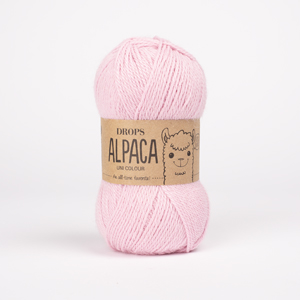





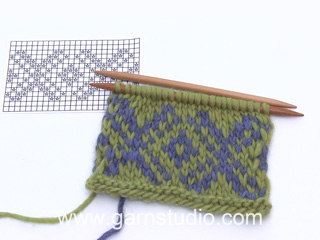
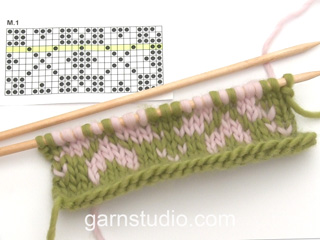
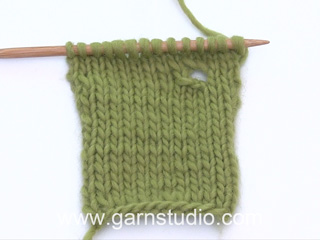
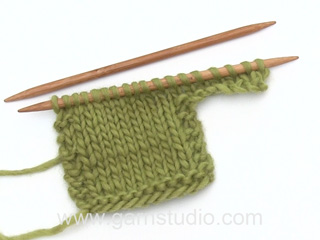


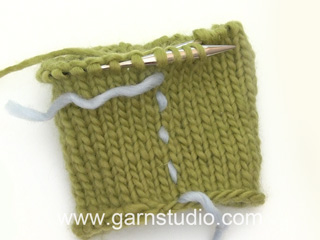

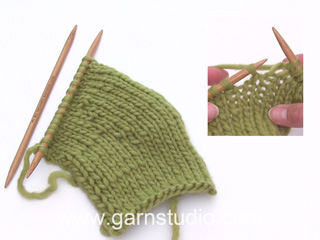
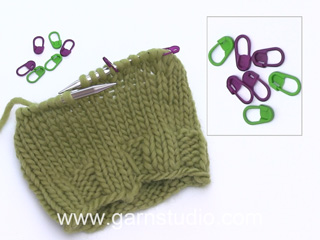
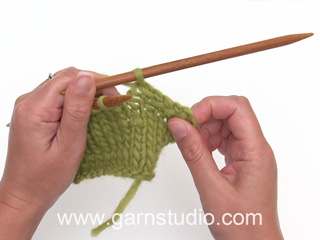


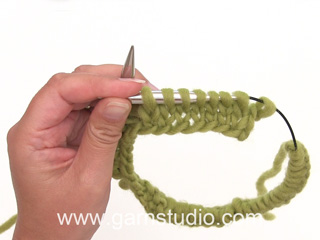
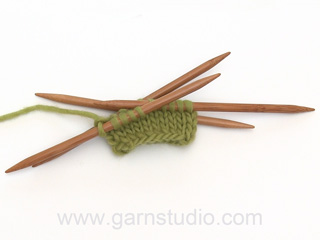
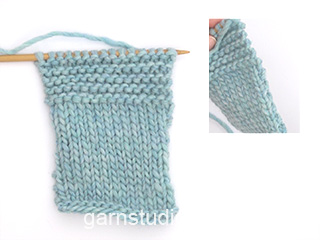
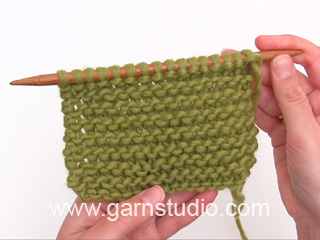
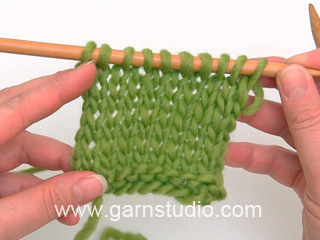


















Comments / Questions (32)
Hvor er diagrammet for mønsteret på bena/ buksen. Ser bare stjernemønsteret rundt magen?
09.08.2024 - 13:43DROPS Design answered:
Hej Siri, det er DROPS Fabel som er meleret og skaber et sådant mønster :)
14.08.2024 - 15:33Ik begrijp niets van de maatvoering/centimeters tov het geschreven patroon en de met centimeters aangegeven tekening. In het patroon staat voor maat 6/9: ‘brei bij een hoogte van 37 cm. verkorte toeren in het achterpand.’ Vervolgens moet bij een hoogte van 46 cm. afgekant worden voor de armsgaten, terwijl daar tussendoor ook nog de band gebreid moet worden.
18.03.2024 - 18:04DROPS Design answered:
Dag Tiny,
De verkorte toeren op het achterpand worden voor het patroon M.1 gemaakt. Daarna brei je inderdaad patroon A.1 en even later kan je af voor de armsgaten. Je houdt de maten in de beschrijving aan.
20.03.2024 - 11:16Hallo, ich möchte das Modell Drops Baby 16-23 stricken. Ist Fabel Fb nr. 162 blue sea die gleiche wie print? Gibt es die Farbe blue sea nicht mehr?
24.08.2022 - 08:52DROPS Design answered:
Liebe Frau Dennert, Farbe Fabel Nr 162 ist immer noch lieferbach (siehe Farbkarte); wenn Sie Hilfe mit den Farben brauch, wenden Sie sich bitte am besten direkt an Ihrem DROPS Laden, dort wird man Ihnen gerne damit weiterhelfen. Viel Spaß beim stricken!
24.08.2022 - 13:26Jeg lurer på om det er rett antall masker på et ben i denne oppskriften? Jeg syns det virker for mange
03.05.2022 - 01:58DROPS Design answered:
Hej Astrid, hvis du har 26 masker på 10 cm (ifølge opskriften) så får du målene i måleskitsen nederst i opskriften. Benet nederst måler da 24 cm i omkreds i den mindste størrelse :)
03.05.2022 - 09:26I love Drops Fabel yarn and patterns and following a sock knitting marathon I have lots left. I wonder if this lovely Little Shepherd jumpsuit pattern could be adapted to fit an 18” baby doll which I am clothing for my great granddaughter who lives in Canada Thank you Jean M
16.02.2021 - 20:03DROPS Design answered:
Dear Jean, it looks like the doll is almost matching a premature size (= 40/44 cm approx. haight of baby in cm), maybe you can find more matching patterns for premature here. Happy knitting!
17.02.2021 - 08:00Hej Hvad menes der med omg. Når man skal strikke benene? Er det frem og tilbage på pinden, som betragtes som en omgang eller er det en pind? Mvh Aia
29.01.2020 - 00:30DROPS Design answered:
Hei Aia. På denne modellen kan man strikke med eller uten knapper mellom bena. Når det strikkes med knapper, strikkes det frem og tilbake og beskrivelsen er da pinner. Strikker man uten knapper, strikkes det rundt og beskrivelsen blir da omgang. God Fornøyelse!
03.02.2020 - 12:03Hej Hvad menes der med omg. Når man skal strikke benene? Er det frem og tilbage på pinden, som betragtes som en omgang eller er det en pind? Mvh Aia
27.01.2020 - 00:07DROPS Design answered:
Hei Aia. Med 1 omgang menes det å strikkes rundt 1 gang (BEN uten knepping), når det strikkes BEN med knepping strikkes det frem og tilbake på pinnene, da blir frem 1 omgang og tilbake 1 omgang (=2 omganger/pinner). God Fornøyelse!
27.01.2020 - 10:56Wat zijn de kleuren verhoudingen? zie alleen een tekening van M1 en niet hoe de kleuren in het pakje zijn verwerkt, zie het wel op de foto.
06.01.2017 - 10:09DROPS Design answered:
Hoi Thora. Dit is het kleurverloop in het garen. Kijk ook op het kleurenoverzicht van DROPS Fabel hier
09.01.2017 - 15:10Danke, das war genau die Info, die ich brauchte.
10.07.2016 - 14:462. Dann soll man in jeder R 12M (unabhängig von der Größe???) mehr stricken, d.h. hin 12M, rück 24M, erneut hin 24+12M, erneut rück 36+12M usw. ist das richtig? Dann komme ich doch in diesen 8 Malen in der kleinsten Größe (152M insg.) auf mehr M, als ich auf der Nadel habe, nämlich 16x12M=192M. Das bedeutet, dass sich die M an der Vorderseite irgendwann überschneiden. Das wirkt auf mich nicht logisch. Könnt ihr mir da weiterhelfen? Vielen herzlichen Dank!
08.07.2016 - 18:11DROPS Design answered:
2. Teil der Frage: Sie stricken jeweils 12 M mehr und kommen somit nach der 8. Wdh auf 120 M (8 x 12 M = 96 M + 24 M, die Sie schon auf der Nadel hatten). Die nächste R stricken Sie über alle 140 M und nehmen dabei gleichmässig verteilt 14 M ab, Sie haben danach also noch 126 M auf der Nadel.
09.07.2016 - 14:50